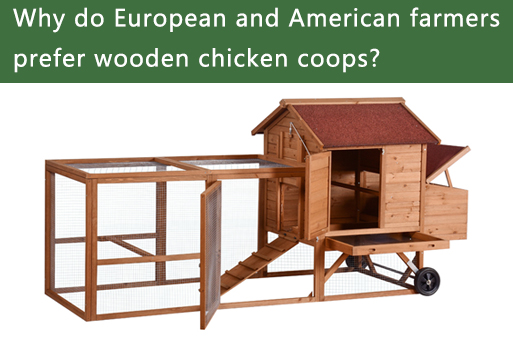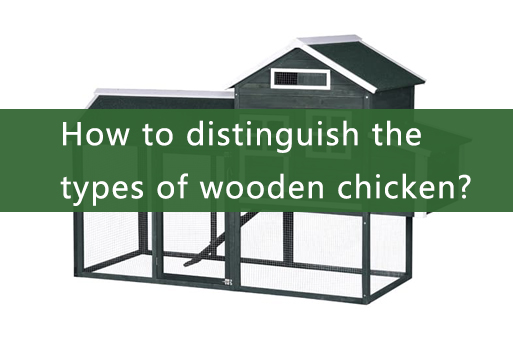Sep 01, 2025
Outdoor Wooden Chicken Cage Selection Guide
Why is it important to choose the right outdoor wooden chicken coop?
Are you familiar with this scene: the wooden chicken coop that you carefully built over the weekend starts to mold after the rainy season. The chickens always like to huddle together due to stress, and the number of eggs they lay is half of what it used to be. You finally managed to keep out wild cats, but you didn't pay attention to the gaps in the bottom, and mice pecked at the newly hatched chicks at night. If you don't choose the right outdoor wooden chicken coop, it will not only be time-consuming and laborious, but will also make the chickens you have worked so hard to care for suffer.
Or you may have heard this story: Tom bought a cheap outdoor wooden chicken coop to save costs. However, within half a year, the wood began to rot and break, so he had to replace it, which cost him more money. What was even more troublesome was that the cage was too compact, and the chickens could not move around. The mortality rate was much higher than before, and the breeding efficiency was greatly reduced.
Before choosing a chicken cage, we must be aware that choosing the wrong wooden chicken cage is no minor issue; it can be a critical factor that impacts the core goals of chicken farming (flock health, farming returns, and management efficiency).
1. Harm to Flock Health: Untreated wood can easily breed bacteria, leading to disease in the chickens. Insufficient space and poor ventilation can trigger stress responses, reducing egg production. Inadequate protection can lead to exposure to predators (hawks, weasels, and rats), resulting in direct losses.
2. Harm to Farming Costs: Low-quality wooden chicken cages lack durability and need to be replaced every one to two years, making them more expensive in the long run than high-quality products. Improper design (such as difficulty cleaning) can increase labor costs; cleaning that once took one hour may take three.
3. Harm to the Farming Experience: Frequent maintenance and handling of chicken issues consumes significant energy, turning the stress of raising chickens from a stressful experience into a frustrating one. For farm operations, chicken health issues can also undermine customer trust (for farmers selling free-range eggs, sick chickens can lead to a loss of customers).
In fact, choosing the right outdoor wooden chicken coop is not difficult. The key is to avoid the pitfalls of "only looking at the price", "ignoring the application", and "missing the details". The following guide will start with "clarifying your breeding needs first" and teach you step by step how to identify the wood's anti-corrosion properties, judge the rationality of the design, check the protective details, and even help you avoid the five most common mistakes made by beginners. Whether you are a family user raising 3-5 chickens or a small farmer with more than 10 chickens, you can find a selection method that suits you and never have to worry about "choosing the wrong chicken coop".
Core premise: first clarify your own needs and avoid blind selection
1. Determine the scale of your chicken farming: Choose a wooden chicken coop of the appropriate size based on the number of chickens you plan to raise (3-5 for a family farm or 10 or more for a small farm).
2. Consider the specific requirements for the coop based on the size of the outdoor space (corner of a yard or open space), the local climate (rainy and humid climates, high temperatures and direct sunlight, or cold climates).
3. Identify the functional priorities: Is the focus on "safety and protection" (predator protection), "convenient management" (easy cleaning and feeding), or "chicken comfort" (ample room for movement).
Material Selection: The "Durability Foundation" of Outdoor Wooden Chicken Coops
1. Wood Type Identification: Compare the advantages and disadvantages of different wood types (e.g., preservative wood: resistant to decay and borers but expensive; pine: cost-effective but requires additional preservative treatment; fir: lightweight and easy to work with, but less moisture-resistant).
2. Preservative Process Inspection: Verify that the cage has undergone professional preservative treatment (e.g., ACQ preservatives, heat treatment). Avoid the use of toxic preservatives (which can affect chicken health). This can be determined by reviewing the quality inspection report and observing the wood's color.
3. Material Quality Control: Metal connectors (screws, hinges) must be rust-resistant (galvanized or stainless steel) to prevent rust and breakage from prolonged outdoor use. Mesh fencing must be sturdy (to prevent weasels and rats from biting through it) and have an appropriate mesh size (to prevent chicks from escaping).
Design Details: Determine the user experience and the quality of life of the chickens.
1. Spatial Design:
- Provide a standard amount of space for each chicken (e.g., at least 0.3-0.5 square meters per bird) to avoid overcrowding.
- Layered/Zoneed Design: Are there designated "roosting areas" (for protection from light and warmth), "feeding areas" (for easy cleaning), and "activity areas" (fenced for chickens to roam)?
2. Protective Design:
- Predator Protection: Is there a roof cover (to protect against hawks and cats)? Is the bottom sealed or elevated (to prevent entry by rats and snakes)?
- Weather Protection: Are there side shields (for rainy areas)? Is the roof slope appropriate (for rapid drainage)? Are there ventilation windows in the summer (to prevent stuffiness)?
3. User-Friendly Design:
- Cleaning Ease: Are there removable floors and side doors (for easy manure removal)? Are there designated drainage outlets?
- Feeding Ease: Are the feed troughs and waterers easy to install and leak-proof? Does frequent door opening and closing required for adding feed?
Operational Safety: Does the door open and close smoothly to prevent pinching the chickens? Are the edges and corners polished to prevent scratches?
Additional Considerations: Improving Long-Term Value
1. Load-bearing and Stability: Check whether the wooden frame is structurally sound (e.g., using mortise and tenon joints/reinforced beams) to prevent it from toppling over due to chicken movement or wind.
2. Scalability: Check whether it supports the subsequent installation of accessories (e.g., egg nests, automatic manure removal systems), or the ability to expand the size by connecting multiple units (to accommodate future farm expansion).
3. Maintenance Cost: Understand the wood's ongoing maintenance needs (e.g., whether annual oiling is required), and whether accessories are easily available for purchase and replacement to minimize long-term costs.
Pitfall Avoidance Guide: 5 Common Mistakes Beginners Make When Choosing an Outdoor Wooden Chicken Coop
1. Focusing Only on Price: Buying cheap, untreated, ordinary wood can lead to rapid rot and frequent replacement.
2. Ignoring Space: Choosing a smaller size to save costs can cause stress in the chickens and reduce egg production.
3. Neglecting Protection: Failing to Consider Local Predators (e.g., failing to protect against weasels in rural areas), resulting in losses.
4. Ignoring Details: Using ordinary iron for metal parts can rust, compromising the cage's structural safety; lack of ventilation can lead to heatstroke in the summer.
5. Not Considering After-Sales Service: Purchasing products without a warranty means you have no legal recourse if quality issues arise.
Read More



